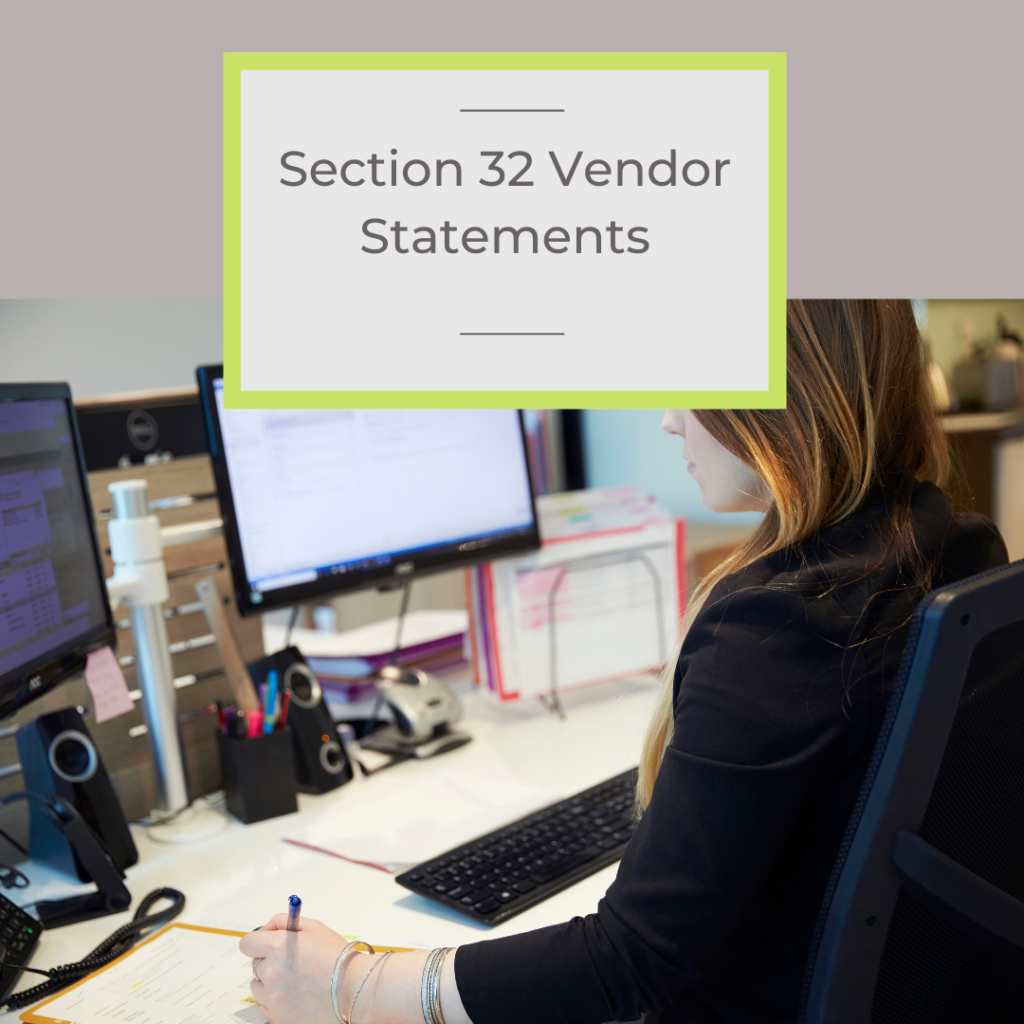What is a Section 32 Vendor Statement?
15 December 2021
In Victoria, when an owner is selling real estate property they have a responsbility to disclose certain information regarding that property. These disclosure obligations fall under Section 32 of the Sale of Land Act, hence the name Section 32 Vendor Statement.
Information which requires disclosure in a Section 32 Vendor Statement include things such as annual council rates, building permits, title details, land use restrictions such as easements and planning overlays, and whether there is an Owners Corporation affecting the property, amongst many more.
If there is any breach of the Sale of Land Act through non-disclosure, whether deliberate or not, this can result in a Purchaser having the right to withdraw from the Contract. This is only on the basis that the non-disclosure has put the Purchaser in a substantially worse off position than if they had known the information prior to contract signing.
The conveyancer acting for a Vendor has a responsibility to ask the Vendor a range of questions about the property to ensure the information being disclosed is accurate, and the Vendor has a responsibility to answer the questions honestly as well as to the best of their knowledge. In addition, the conveyancer will undertake property searches and enquiries to assist in the preparation and accuracy of the Section 32 Vendor Statement.
Depending on the nature of the property, it can take 1-2 weeks for a conveyancer to draft a legally valid and comprehensive Section 32 Vendor Statement as many of the property searches and enquiries required are issued for statutory authorities, such as the Owners Corporation Manager, Council or State Revenue Office, each of which have their own processing times to issue the requested information. It is important to keep this timeframe in mind when putting your property on the market to ensure your conveyancer has ample time to draft the Section 32 Vendor Statement for prospective buyers to peruse.
As a buyer, you should always be provided with a copy of the Section 32 Vendor Statement before you submit an offer on a property. The document should also be reviewed by your conveyancer before you sign the contract (see our blog post on contract reviews here).
Put simply, the Section 32 Vendor Statement underpins a sale transaction. It is the foundation for a successful sale, because without an accurate and valid Statement non-disclosure issues can see the sale falling apart sometimes before the property has even sold.
If you are looking to put your property on the market, give us a call to discuss the conveyancing process and any disclosure obligations you may have for the Section 32 Vendor Statement.
